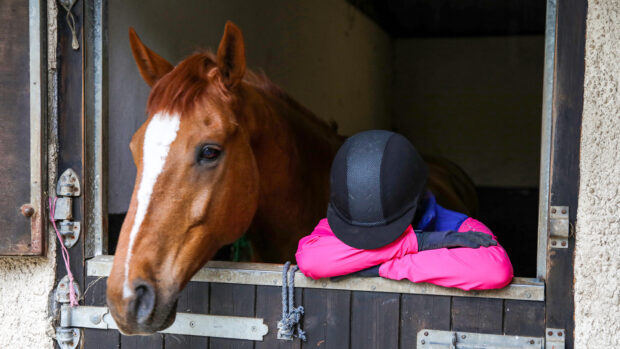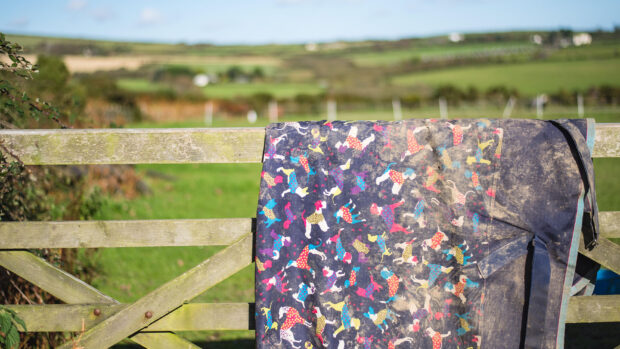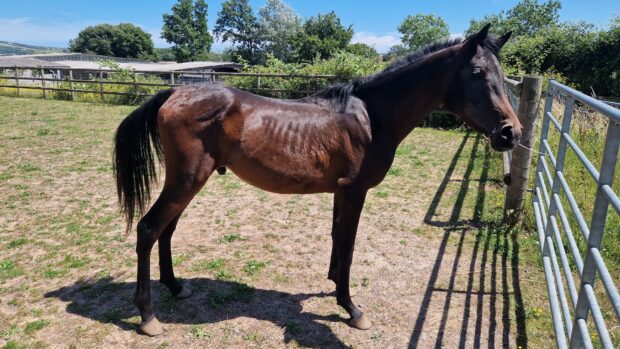Thinking about swapping your straw or shavings for wood pellets? Made from compressed wood, these are sold in 10kg or 15kg bags, to which you add water (or sprinkle it directly onto the pellets) on order to activate them. Here's what you need to consider first...
The pros of wood pellet horse bedding
Absorbency
“Verdo wood pellets will absorb up to three times their own weight in liquid,” says Angela Curgenden from wood pellet manufacturer, Verdo. This figure was arrived at by independent testing, and may not be true of all horse pellets on the market — however, it’s significantly more absorbent than most other types of horse bedding.
Hygiene
“From a veterinary perspective, one of the major pluses of our wood pellets is that they’re heated to a high temperature during manufacture, meaning any bugs are killed off,” explains Stuart Fitzgerald at the White Horse Energy Company, another wood pellet manufacturer.
“You can be sure they’re not harbouring any nasties. The beds don’t move about, and the moisture content is consistent, which is better for horses’ feet. Also, the air quality is also typically better with a wood pellet bed than other types of horse bedding, which is beneficial from a respiratory point of view.”
Time-saving
You can see the wet patches in a wood pellet bed easily — no need to scrabble about checking your banks — and can remove them without having to take the whole bed apart, which reduces mucking-out time.
Cost-saving
Most wood pellet companies offer the option of buying in bulk, and provided you’ve got somewhere to store it and have the capital up-front, this is a good way of making cost savings. It you buy a ton or half ton, you could be paying under £5 for a bag of wood pellets, including VAT and delivery, which is significantly cheaper than most brands of shavings.
“It costs £2.40 for a 10kg bag if I collect from my local supplier, so it’s very cost effective,” says Tamworth-based horse owner Lynne Bagnall. “I’ve been using wood pellets for six years now and wouldn’t use anything else.”
It can be easy to manage
“It does take a while to get the hang of it, but once you’ve cracked it, it really is brilliant stuff,” says Lynne. “I make the stable up with 10 to 12 bags to start. I’ll slit the bag open on the stable floor and pour about a half a bucket of water into each bag, go and have a cuppa for half an hour, then tip it all out and make a nice flat bed. I bank it up along the back wall.
“The first week, I just take out any poo — the wet stuff drains down to the bottom of the pile and goes solid. Once a week I’ll take out the hard wee patch and replace with a new soaked bag of pellets. If you have a messy horse you can take out the poo and the worst of the wet each day and just mix the rest of the wet with the dry — it sounds gross, but the clean dry bedding will soak up the wet really well.”
The cons of wood pellet horse bedding
VAT
As horses are considered to be a luxury item, VAT for horse bedding is 20%. Wood pellets can be used for fuel, so you may find the same or similar product on sale for 5% VAT. However, the onus for paying the correct VAT is on the customer, so you risk action from the Inland Revenue if you buy at the cheaper rate.
Like this? You might also enjoy reading these:
Choosing the right bedding for you and your horse
New machine allows owners to make their own shavings
8 ways to reduce your hay bill this winter
Storage
To get the cheaper rate for wood pellets, you typically need to buy in bulk (half a ton or a ton), so you’ll need enough space to store your purchase. However, as the pellets are heavier and denser than shavings or straw, they’re easier to store. “Once activated, a bag of Verdo pellets is the same weight as a typical bale of shavings, but they’re compacted so don’t take up as much space to store,” points out Angela.
Appearance
“Wood pellets are a little bit like Marmite — people either love them or hate them,” says Stuart. “The obvious downside is they don’t make a big, fluffy bed like shavings or straw. But what they lack from a visual perspective they make up for from a veterinary and cost perspective.”
All wood pellets are not created equal…
“There are lots of makes of wood pellet on the market, but they’re actually quite different. Some use recycled wood, which means the end products may include additives that can reduce absorbency, and sawdust, which is obviously more dusty,” Angela explains. “Verdo wood pellets are made from FSC certified softwood timber, and the bark is stripped off, so only the wood goes into the product.”
Stuart Fitzgerald agrees that wood pellets do vary from company to company: “They all offer different absorbency, fluffiness and cost savings.”
So as with most types of horse bedding, it’s worth shopping around and asking fellow horse owners for their experiences with different brands, before taking the plunge yourself. But typically savings can be made in both time and money, especially if you’re intending to buy in bulk.




